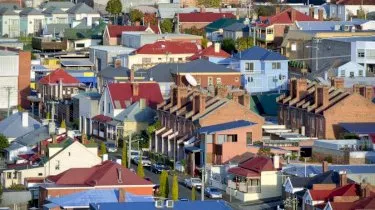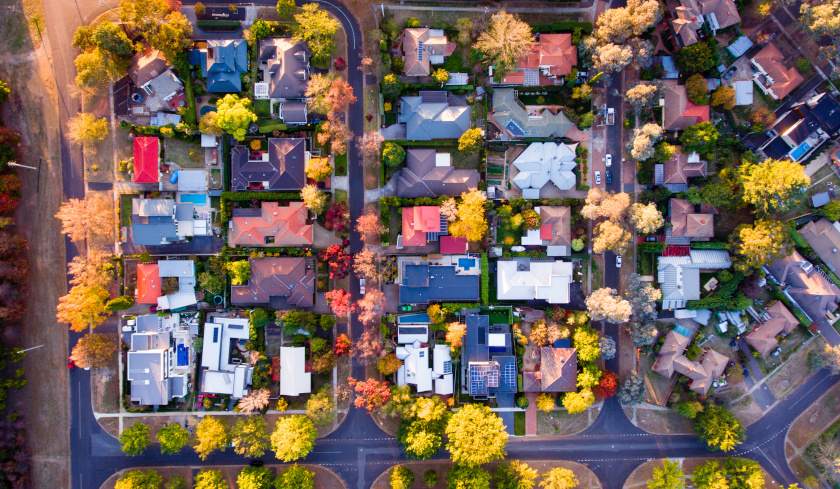Invest
Spate of properties could hit the market as government scheme expires
Investors have been advised to watch properties coming to the end of their term under the National Rental Affordability Scheme (NRAS) over the coming months, which may trigger a wave of selling.
Spate of properties could hit the market as government scheme expires
Investors have been advised to watch properties coming to the end of their term under the National Rental Affordability Scheme (NRAS) over the coming months, which may trigger a wave of selling.

Robert Muller, property expert and managing director of BIS Oxford Economics, told Nest Egg prospective investors would do well to watch how current landlords involved in the Rudd government’s NRAS proceed as their arrangements come to an end this year, with many predicted to sell over facing lower rental yields.
The NRAS kicked off in 2008, and aimed to increase the supply of new and affordable rental dwellings by providing an annual financial incentive for up to 10 years. This incentive is issued to housing providers, to provide affordable rentals at minimum 20 per cent below market rates.
Crystal ball
Mr Muller said the NRAS ending may offer insight to how Bill Shorten’s recently announced rental affordability scheme will play out, should Labor come to power in the May election.

“One of the dangers of these types of things is that the benefit is in place for a period of time, but what happens when it ends?” Mr Muller said.
“That will be interesting to see how that plays out, because the next 12 months will be the first year where people on the old NRAS will face that as an issue.
“If they’re not getting the benefit and they can’t get the rent increase, will they then just offload the property?”
Mr Muller said this is particularly likely, given that yield is expected to remain low at 2.5 per cent across Sydney and Melbourne over the next 12 to 18 months, and capital growth has been curbed by dwindling housing markets.
He said unless rents begin to rise, few investors are likely to be incentivised by Labor’s proposal, as the $8,500 a year subsidy will not offset the minimal rental yield gained off rents set at 20 per cent below the market in a low-yield environment.
“It’s hit the market in a period of negative sentiment towards residential – and in a market where the yields are terrible anyway,” Mr Muller said.
“Unless the markets fall back a fair bit more, the yields are still not going to be fantastic in 12 to 18 months’ time, and therefore yes, you’re getting this benefit, but you’re offering rent at 20 per cent below the market.
“It will become more of a benefit, I suspect, when rents start rising.”
Labor’s proposal
At the ALP’s national conference held in December last year, Bill Shorten used his speech to announce his plan to improve rental affordability for low and middle-income earners.
Under the 10-year plan, investors will be afforded a subsidy of $8,500 for 15 years should they commit to building new rental properties and keeping rent at 20 per cent below the market rate.
Several property experts have suggested the scheme is a close re-run of the Rudd government’s NRAS that provided a financial incentive for up to 10 years for investors that provide people on low to moderate incomes with rents at least 20 per cent below market value.

Property
North platform adds household reporting feature to boost adviser efficiency
AMP's North platform has launched consolidated household reporting across multiple client accounts, helping financial advisers streamline their client review processes. Read more

Property
What Adds The Most Value To Properties?
Wondering how to up the value of your property? Properties are worth a lot of money in general, but there’s always a way to maximise value. The good news is that most of the things you can do to ...Read more

Property
Centuria reports strong growth in alternative real estate sectors for FY24
Centuria Capital Group has reported significant growth in alternative real estate sectors for the 2024 financial year, driving stable performance and increased guidance for FY25. Read more

Property
How to leverage equity in your home for investment or renovation
Home equity, the value of your property minus any debts owed, is a powerful financial resource many homeowners in Australia can utilize to further their financial goals. Whether you're looking to ...Read more

Property
Exploring REITs: Real estate investment without buying property
Real Estate Investment Trusts (REITs) offer a compelling investment alternative for those interested in the real estate market but may not want to endure the complexities and capital requirements of ...Read more

Property
Retirement communities: a pivotal element in meeting Australia's housing targets
The Retirement Living Council (RLC) has recommended that retirement communities should be considered a vital part in the Australian Government's initiative to fulfill the Housing Australia Future Fund ...Read more

Property
Australians adjust financial strategies amid changing property market dynamics
The 2023 calendar year saw Australian borrowers acquiring a total of $300.9 billion in new loans for property purchases, marking a 12.7% decrease from the previous year. Read more

Property
Split home loans unlocking doors for Aussie buyers
Australians are teaming up to dive into the real estate market and seize the advantages of home ownership, with the trend of split home loans surging as family and friends unite to buy properties ...Read more

Property
North platform adds household reporting feature to boost adviser efficiency
AMP's North platform has launched consolidated household reporting across multiple client accounts, helping financial advisers streamline their client review processes. Read more

Property
What Adds The Most Value To Properties?
Wondering how to up the value of your property? Properties are worth a lot of money in general, but there’s always a way to maximise value. The good news is that most of the things you can do to ...Read more

Property
Centuria reports strong growth in alternative real estate sectors for FY24
Centuria Capital Group has reported significant growth in alternative real estate sectors for the 2024 financial year, driving stable performance and increased guidance for FY25. Read more

Property
How to leverage equity in your home for investment or renovation
Home equity, the value of your property minus any debts owed, is a powerful financial resource many homeowners in Australia can utilize to further their financial goals. Whether you're looking to ...Read more

Property
Exploring REITs: Real estate investment without buying property
Real Estate Investment Trusts (REITs) offer a compelling investment alternative for those interested in the real estate market but may not want to endure the complexities and capital requirements of ...Read more

Property
Retirement communities: a pivotal element in meeting Australia's housing targets
The Retirement Living Council (RLC) has recommended that retirement communities should be considered a vital part in the Australian Government's initiative to fulfill the Housing Australia Future Fund ...Read more

Property
Australians adjust financial strategies amid changing property market dynamics
The 2023 calendar year saw Australian borrowers acquiring a total of $300.9 billion in new loans for property purchases, marking a 12.7% decrease from the previous year. Read more

Property
Split home loans unlocking doors for Aussie buyers
Australians are teaming up to dive into the real estate market and seize the advantages of home ownership, with the trend of split home loans surging as family and friends unite to buy properties ...Read more








